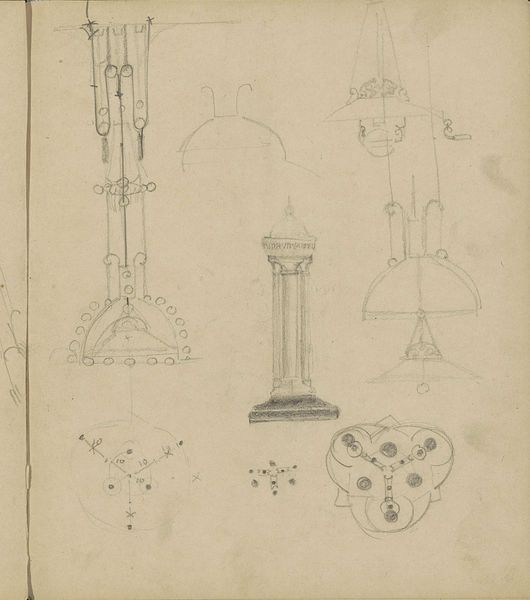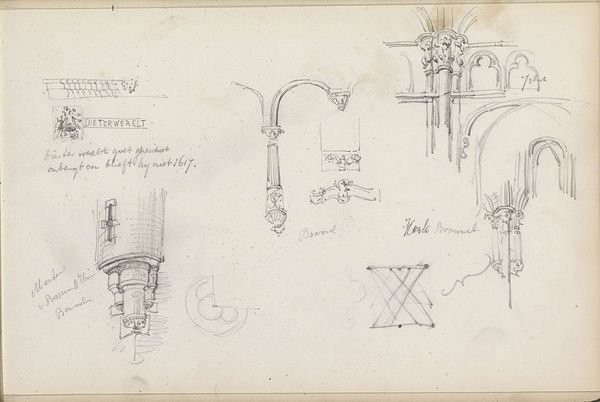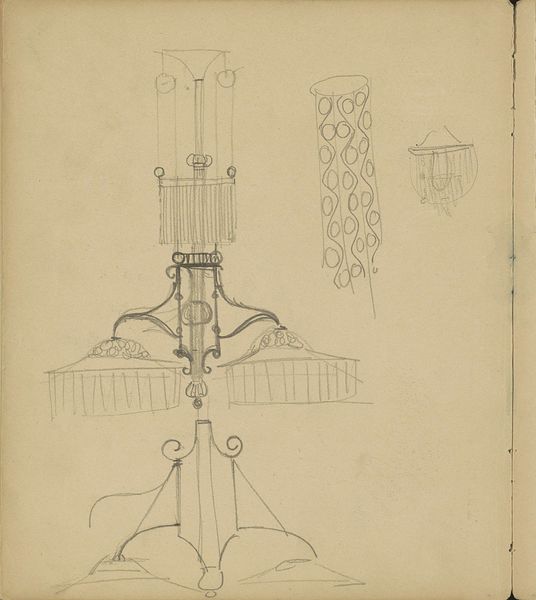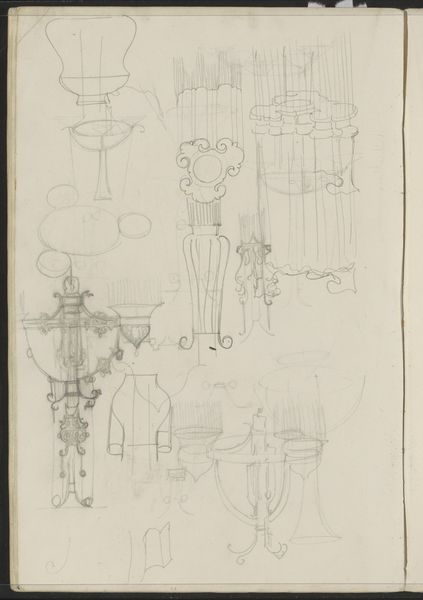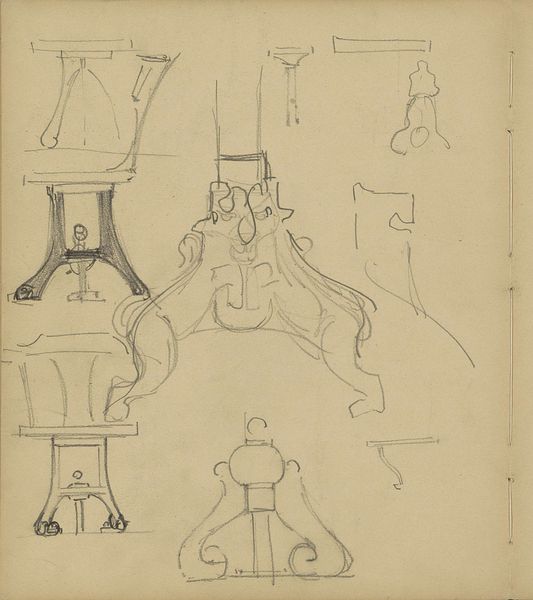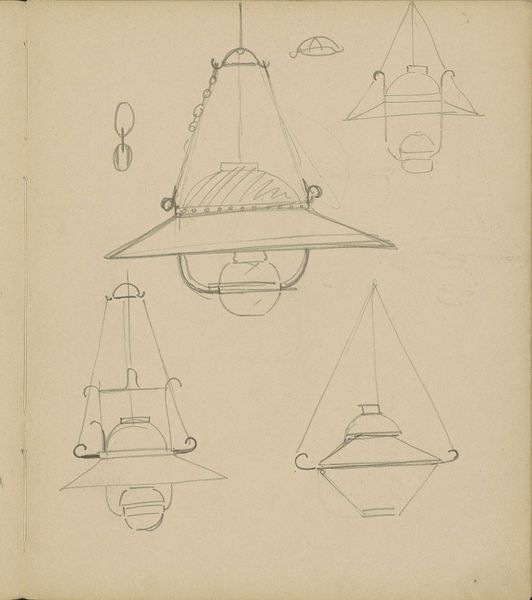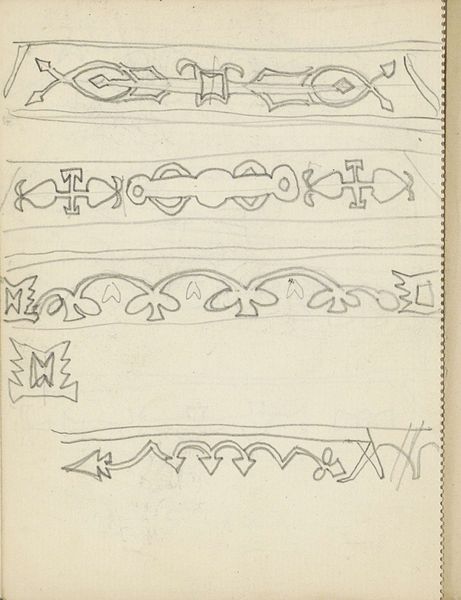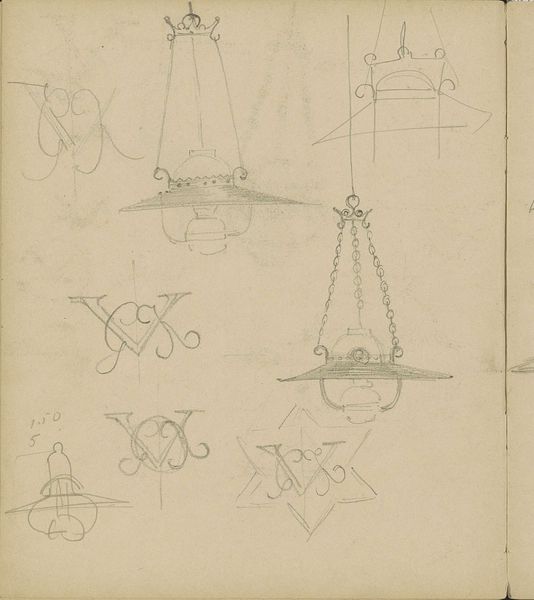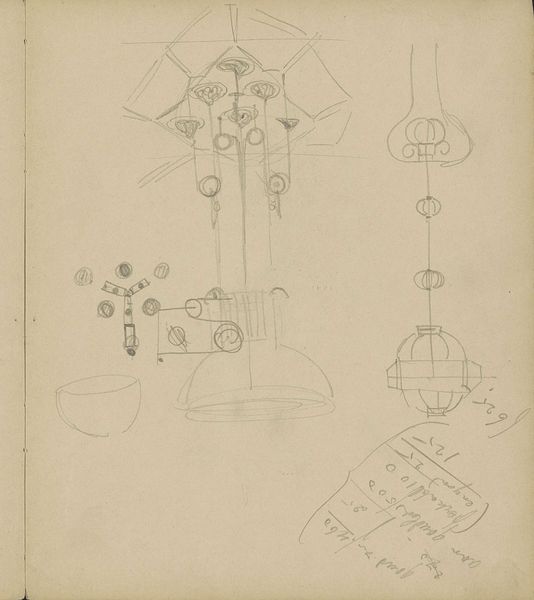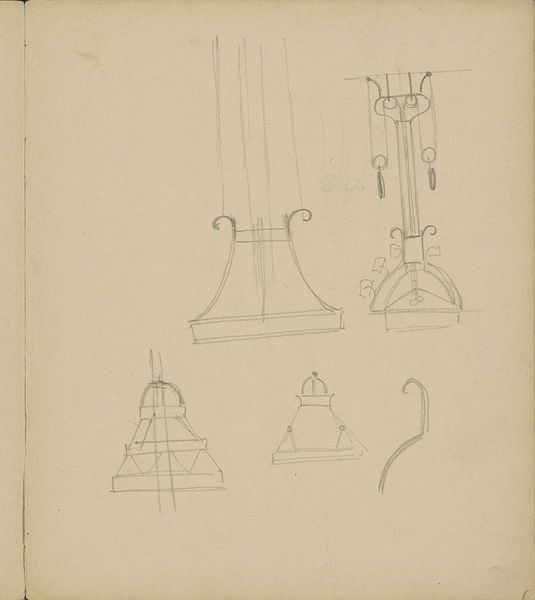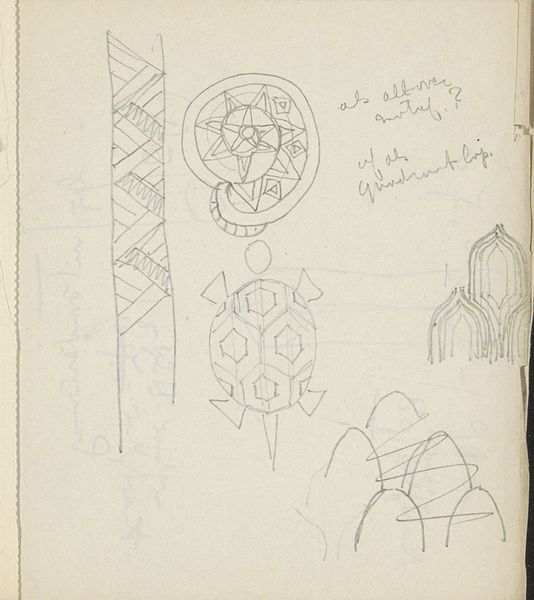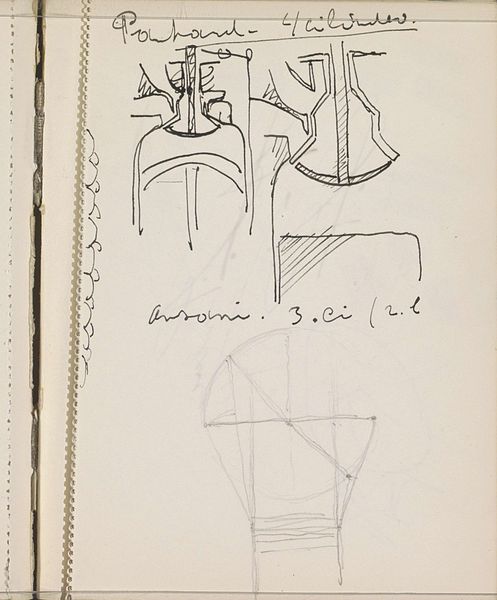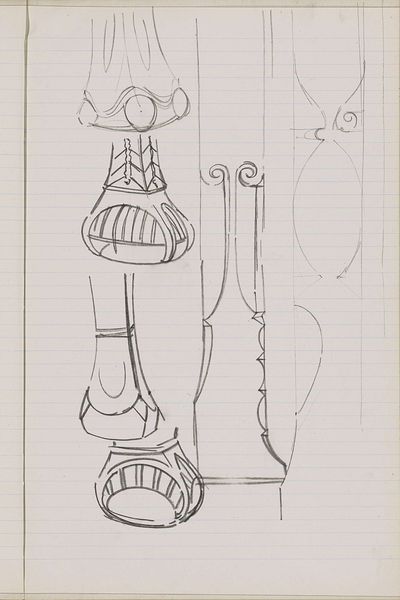
drawing, pencil
#
drawing
#
comic strip sketch
#
quirky sketch
#
cartoon sketch
#
personal sketchbook
#
sketchwork
#
geometric
#
pencil
#
pen work
#
sketchbook drawing
#
storyboard and sketchbook work
#
cartoon carciture
#
sketchbook art
#
modernism
Copyright: Rijks Museum: Open Domain
Editor: Here we have "Stokken of wapens en knoppen," dating from around 1916 to 1945. It’s a pencil drawing currently held in the Rijksmuseum. It gives me such an unfinished, playful vibe with all the sketch-like qualities. What catches your eye when you look at this piece? Curator: Immediately, I am struck by the interplay of geometric forms against the organic fluidity of the lines. Note how Stolk organizes the composition. Each element, whether a 'wapen' or a 'knop,' is delineated by a network of lines, constructing a visual syntax unique to the artist. Do you observe any inherent contrasts or repetitions? Editor: Well, I see the repetition of circular shapes versus the sharp angles in some of the decorations...and there's a repeated snake-like element! It’s almost like the contrast creates a certain energy. Curator: Precisely. Consider the pencil work itself. The varying pressure and the density of lines define form and shadow. How does the artist's treatment of negative space contribute to the overall composition? Editor: It makes some forms feel heavier than others. Also, the writing, while part of the sketch itself, feels detached... deliberately unintegrated. Is that the artist calling attention to the sketchiness of the drawing? Curator: A compelling suggestion. The text certainly resists being neatly woven into the visual narrative. Such fragmentation could be interpreted as an intentional disjuncture between the linguistic and the visual. Do you agree this interplay elevates it beyond mere illustration? Editor: I think so. I initially thought it was just some playful scribbles, but focusing on how the drawing uses lines and shapes really reveals its complex structure. Curator: Indeed. We see how form constitutes a language of its own, capable of communicating complexities independently.
Comments
No comments
Be the first to comment and join the conversation on the ultimate creative platform.
